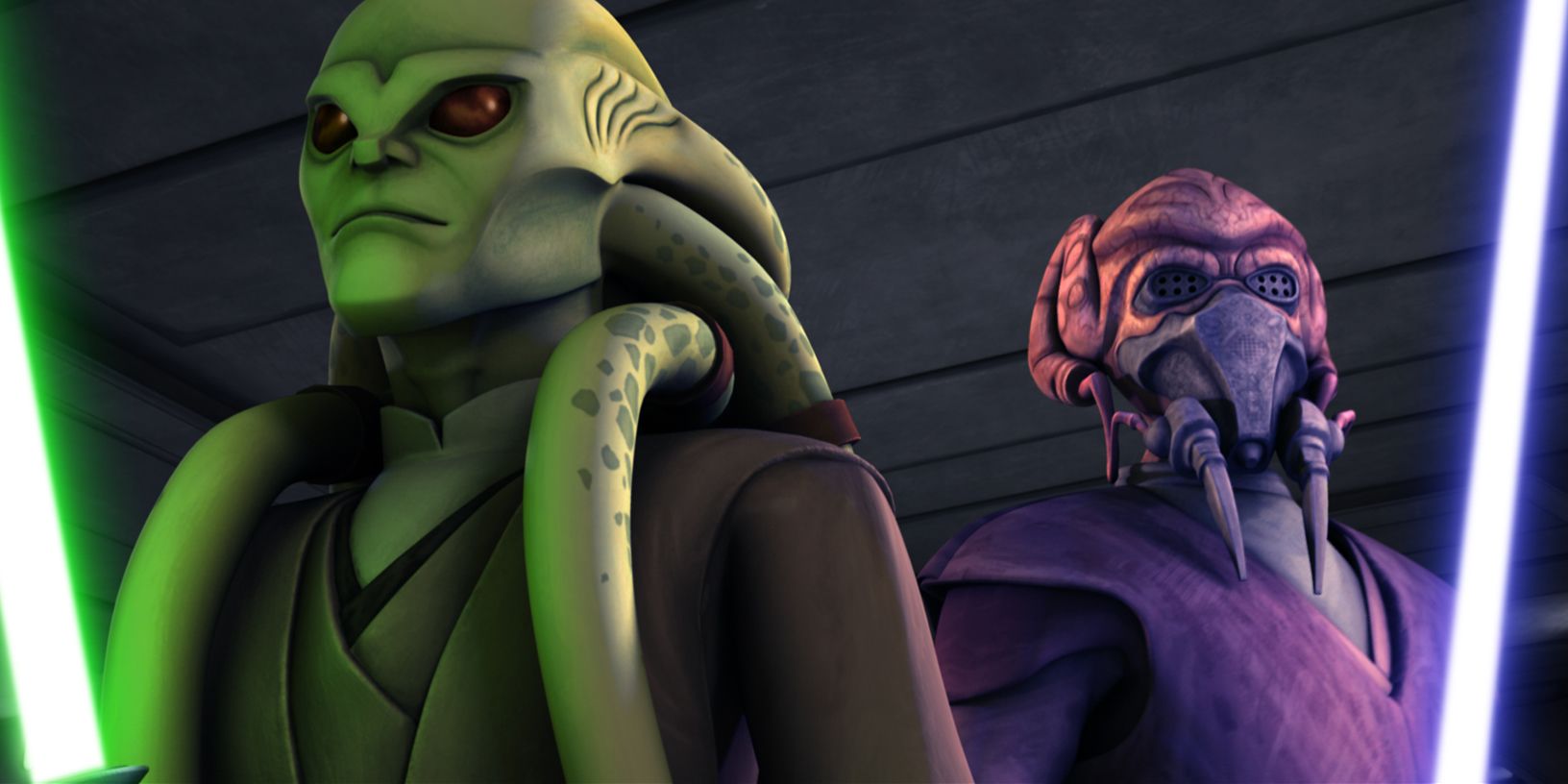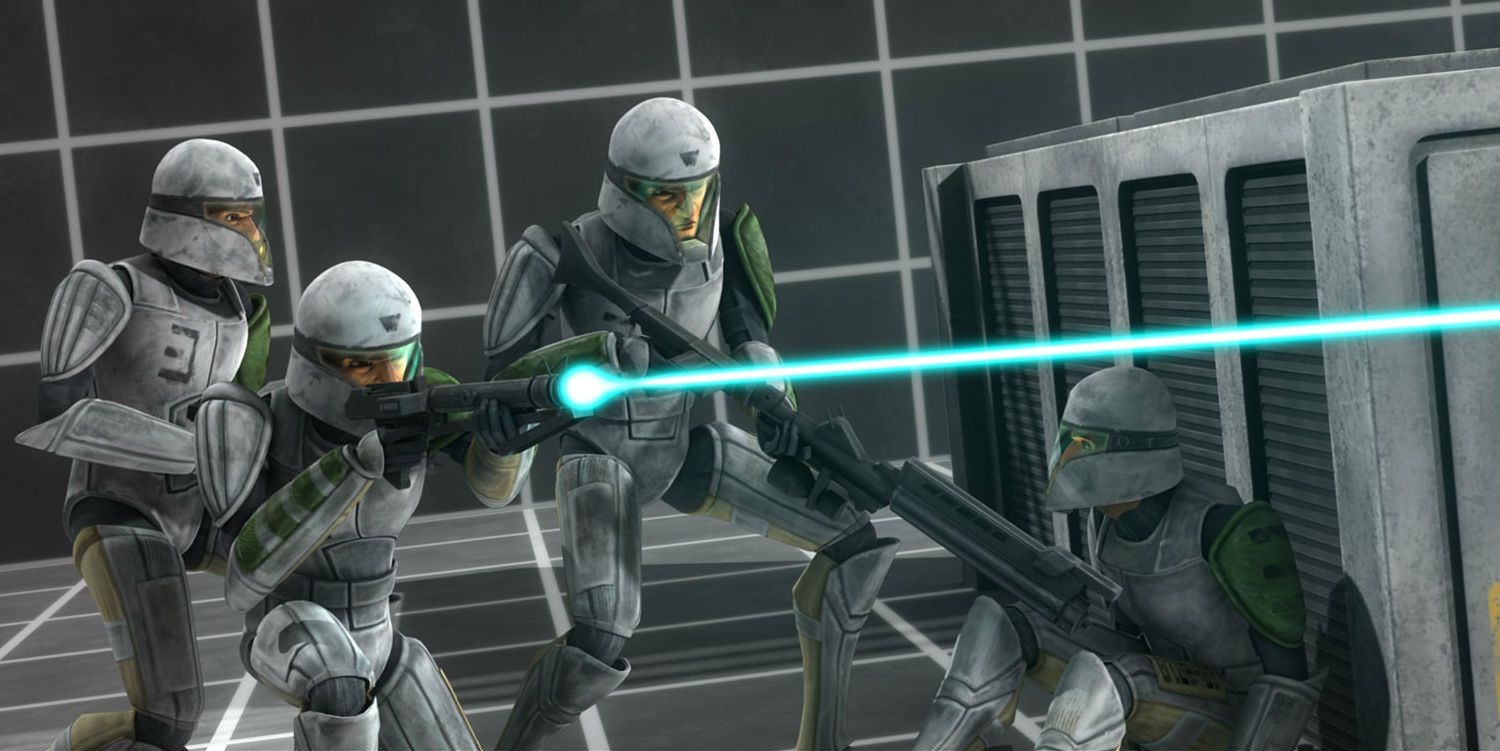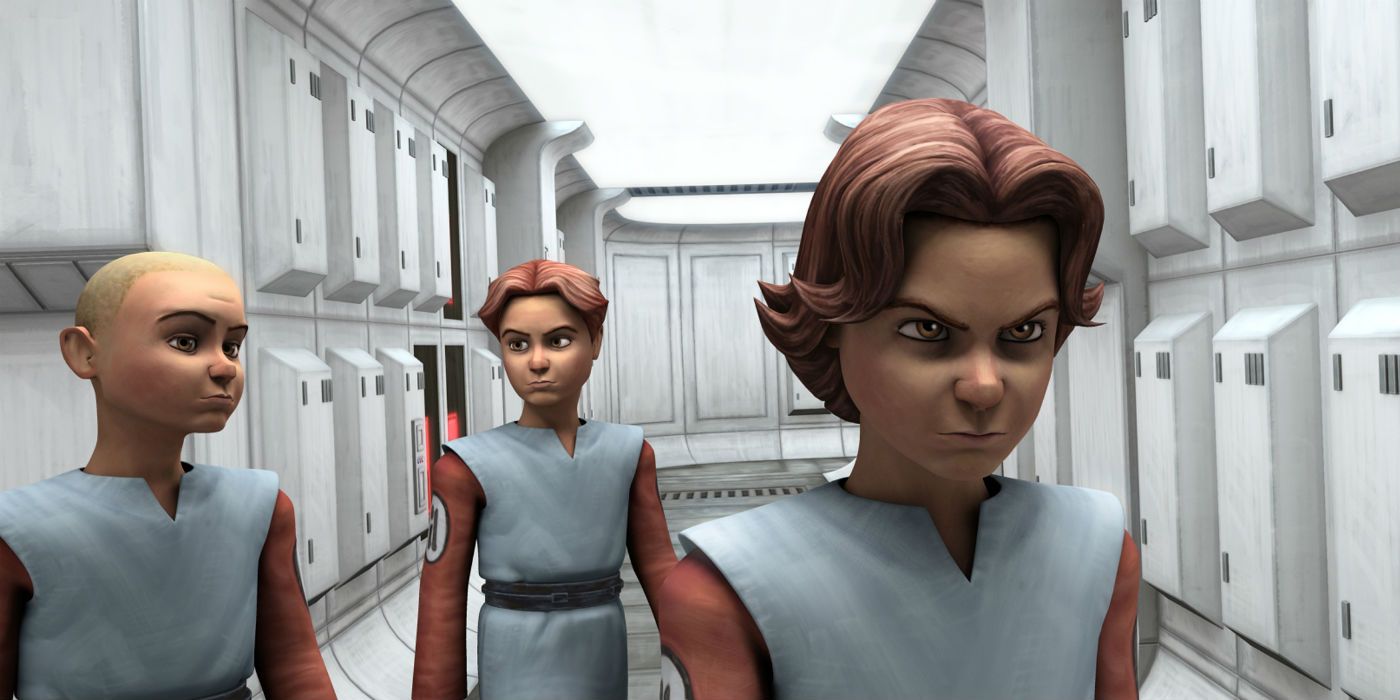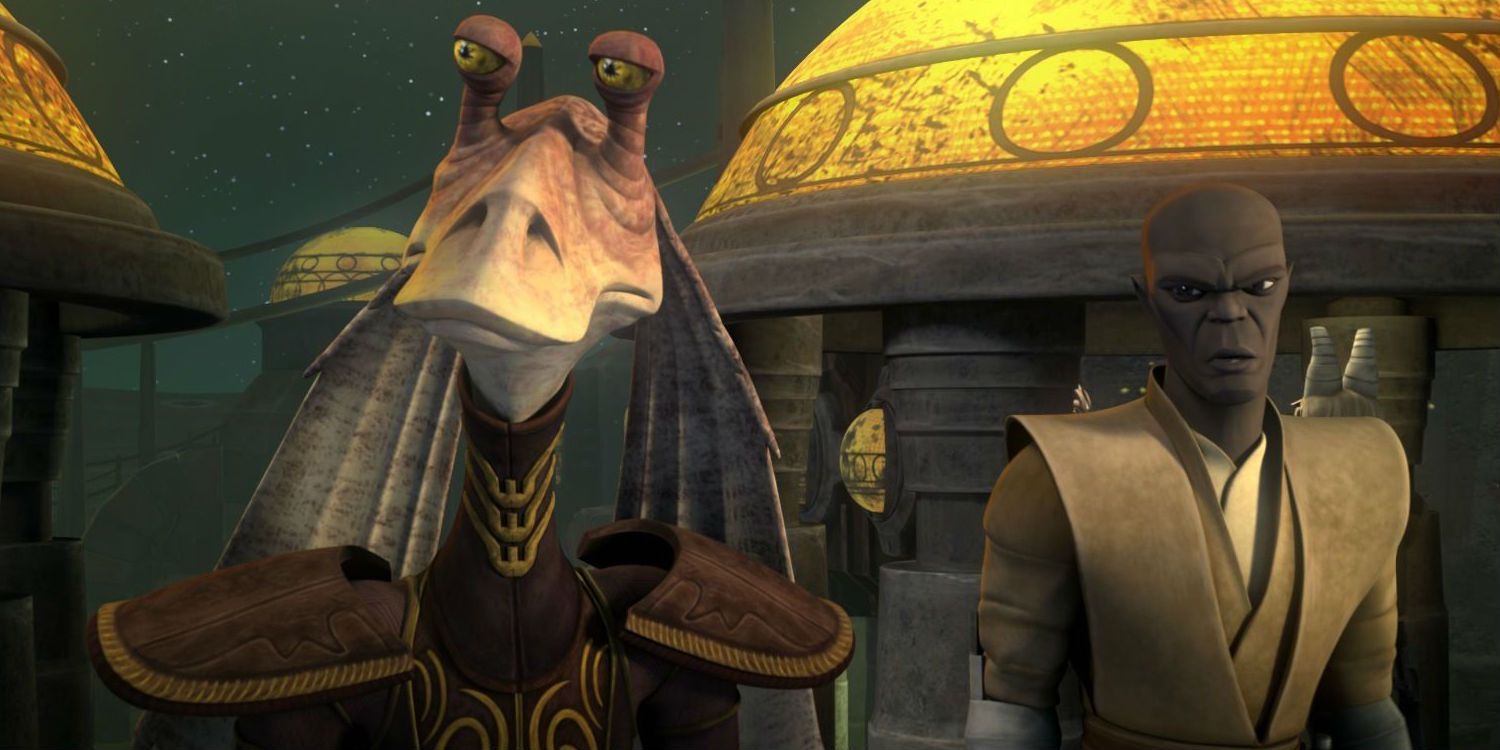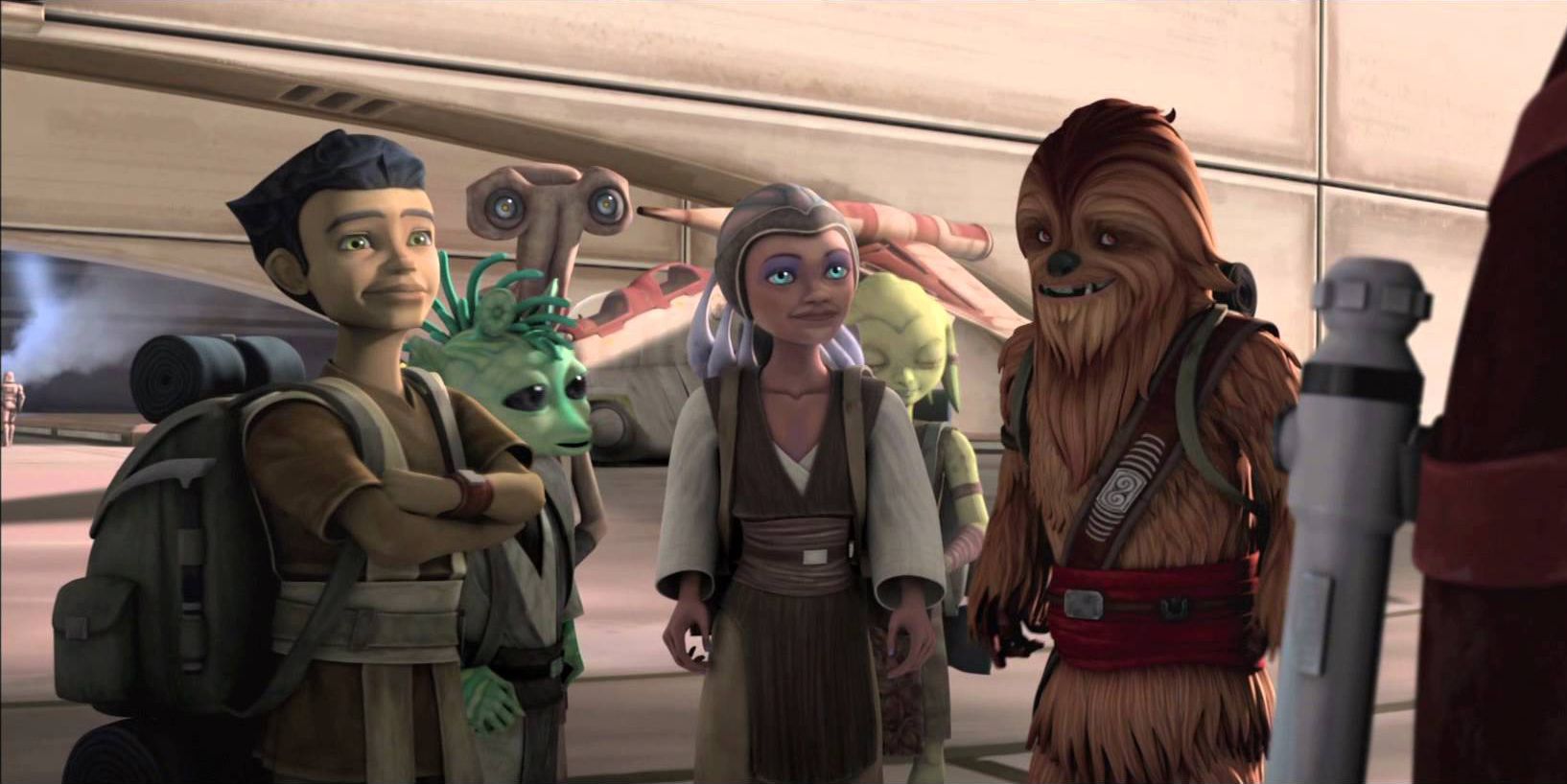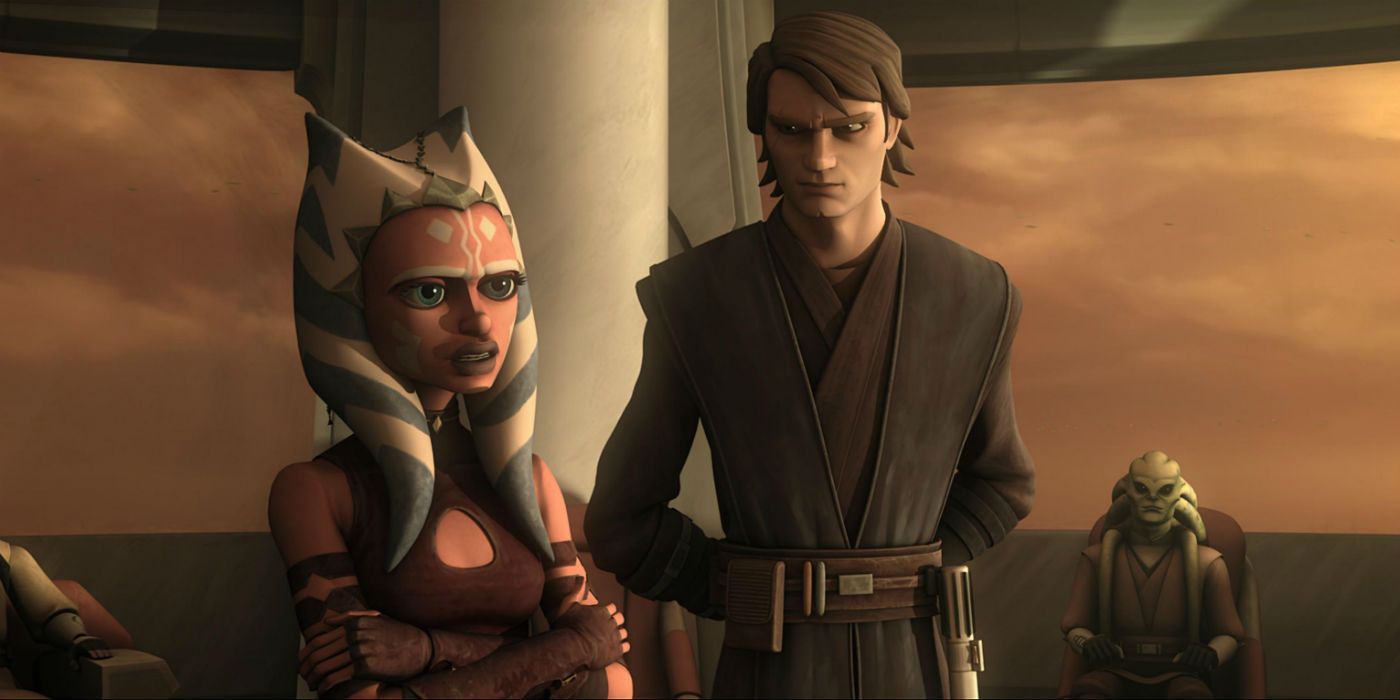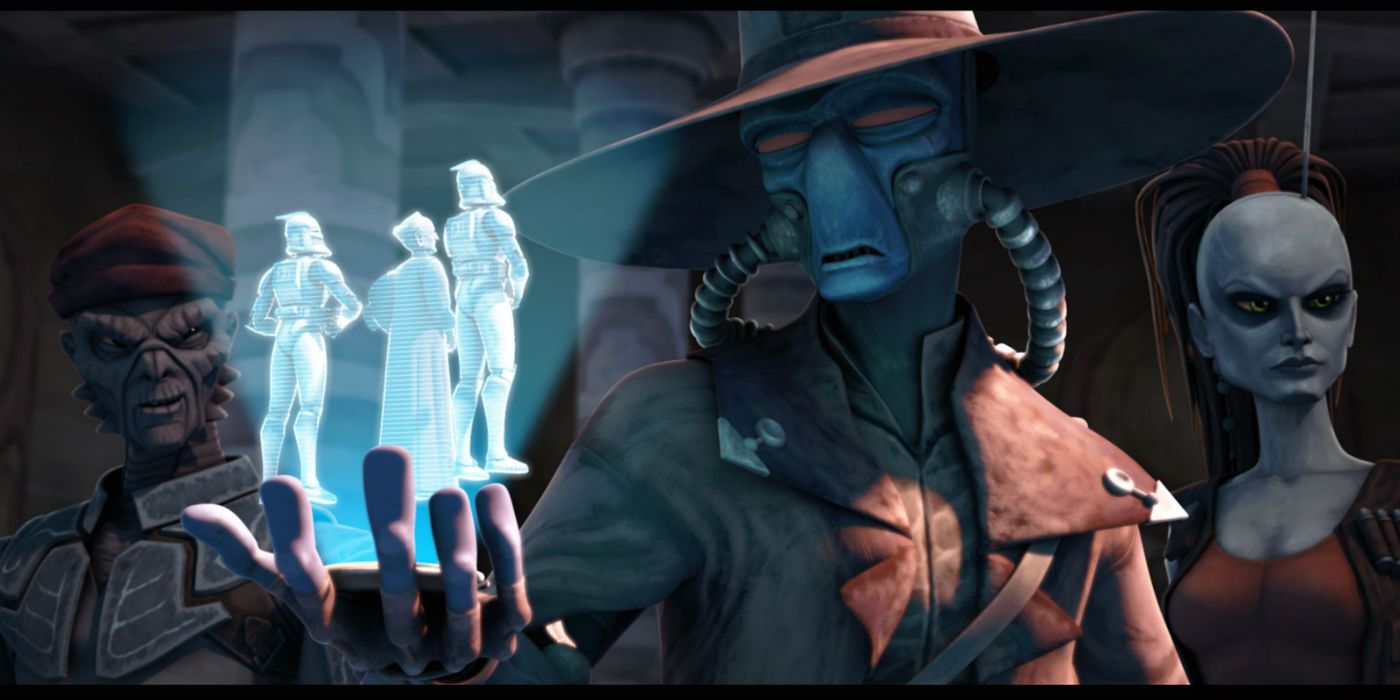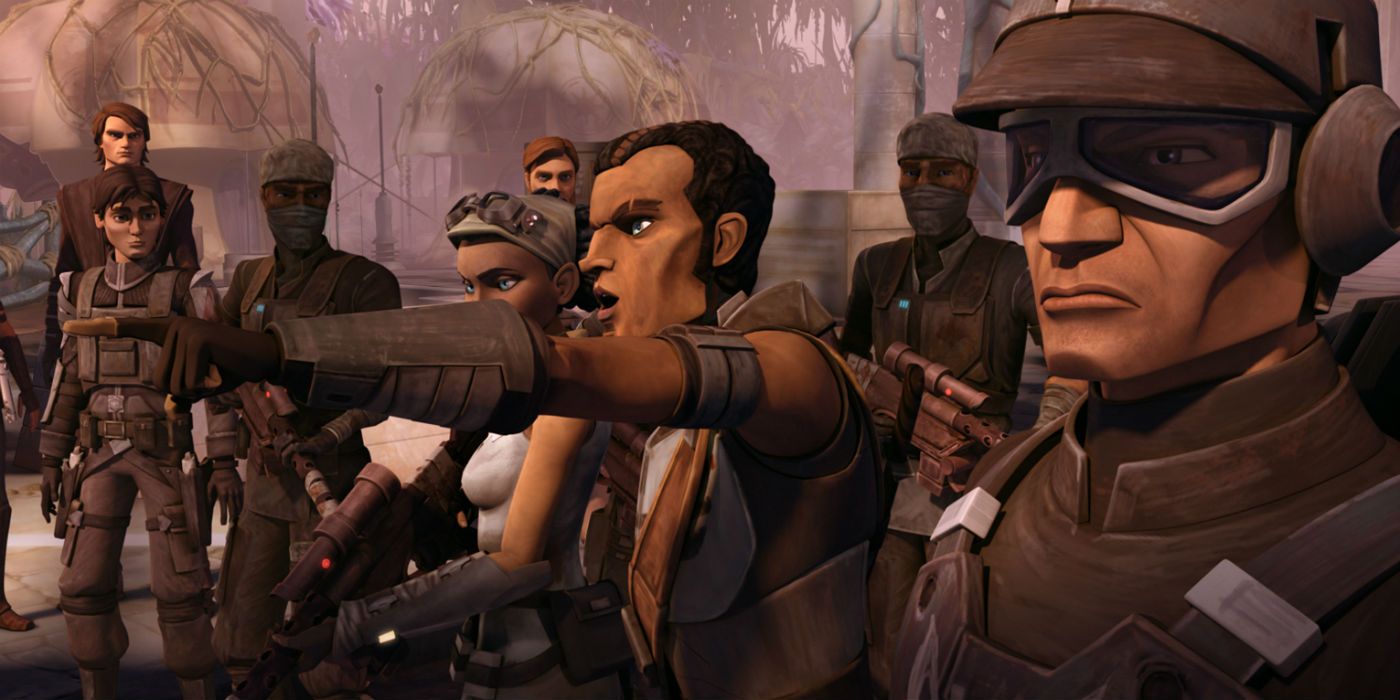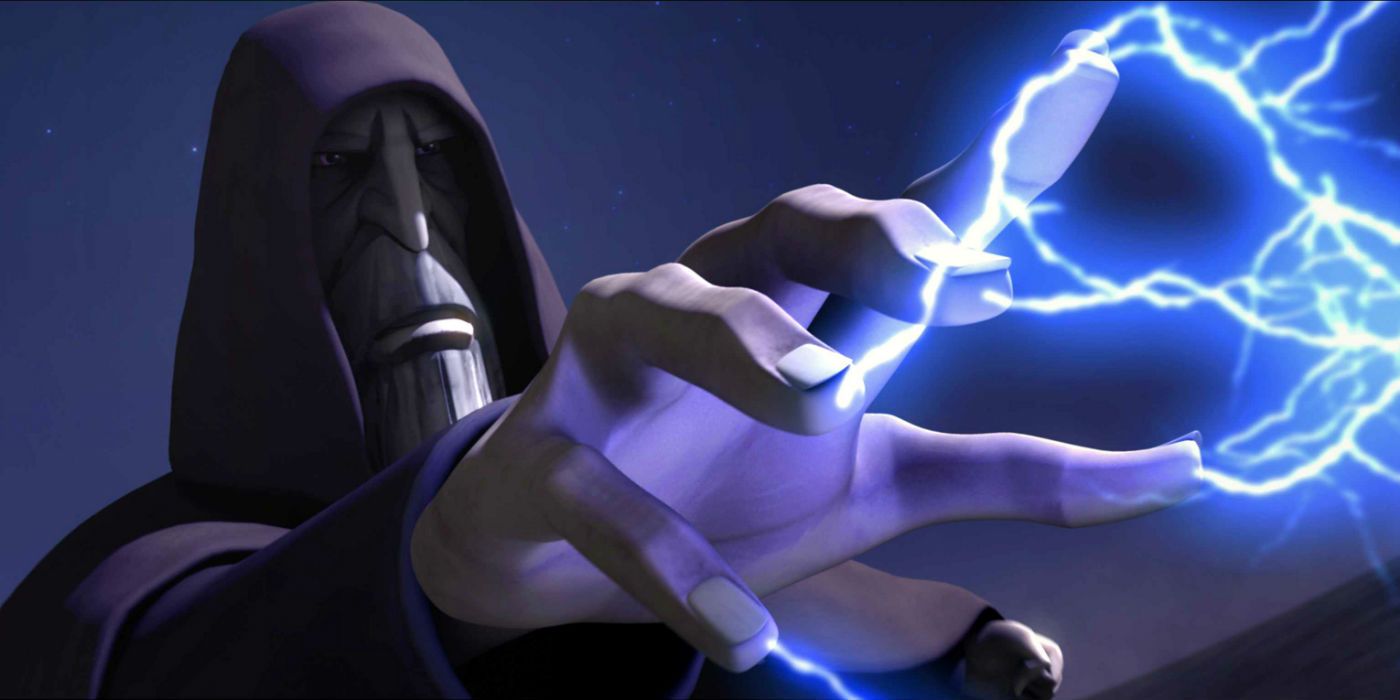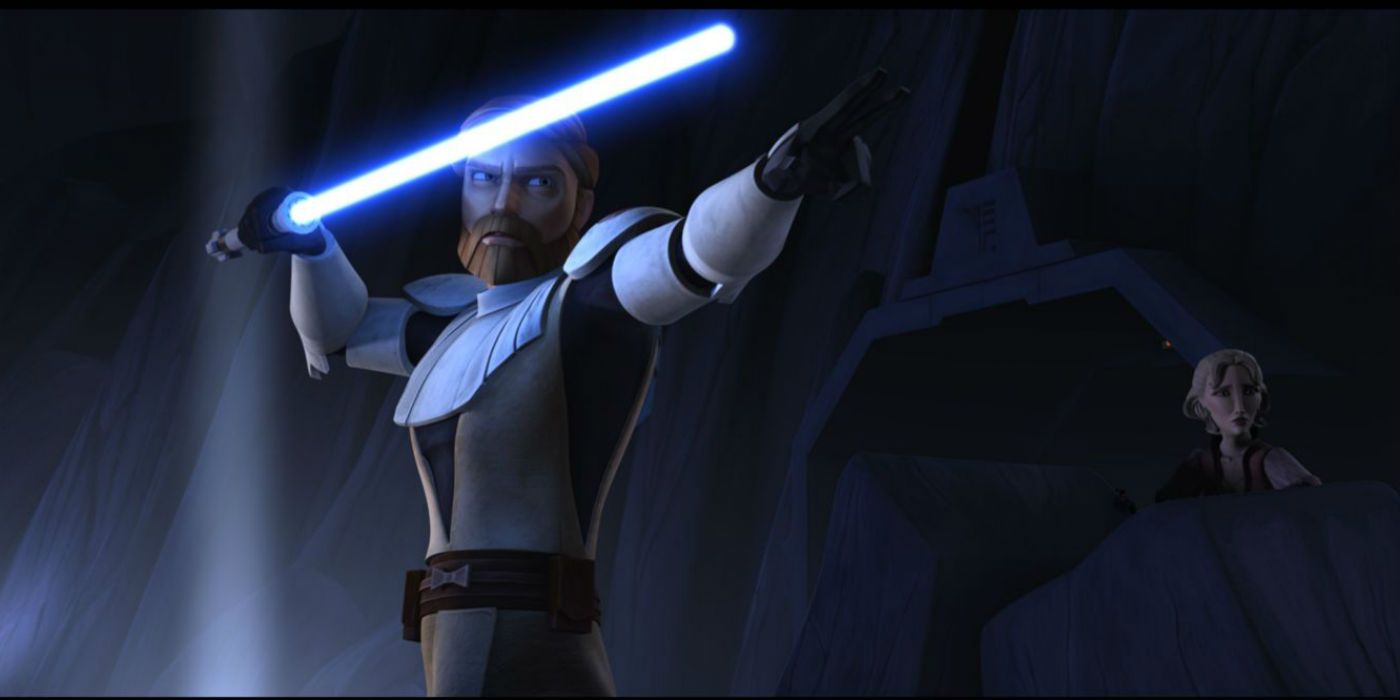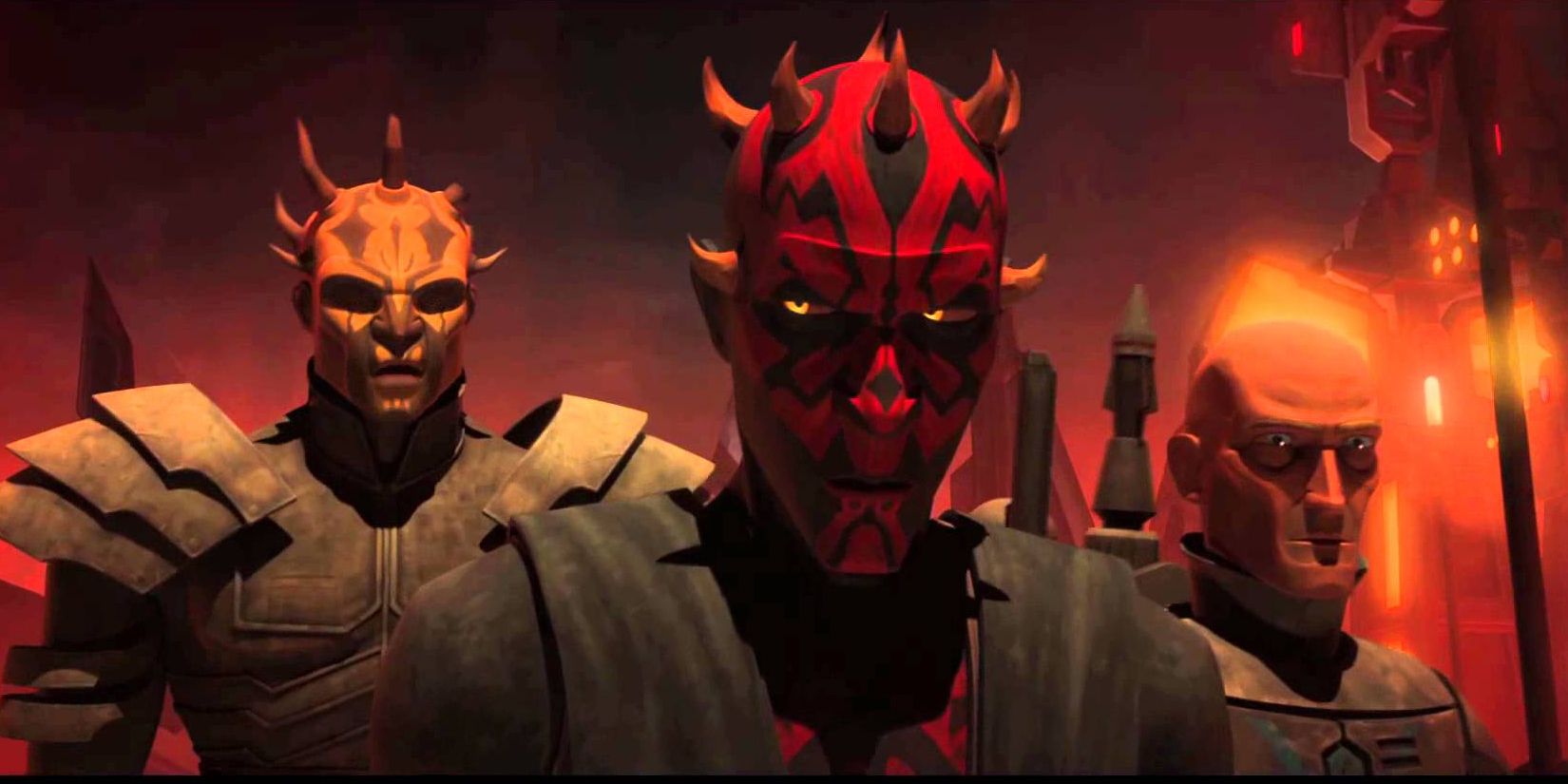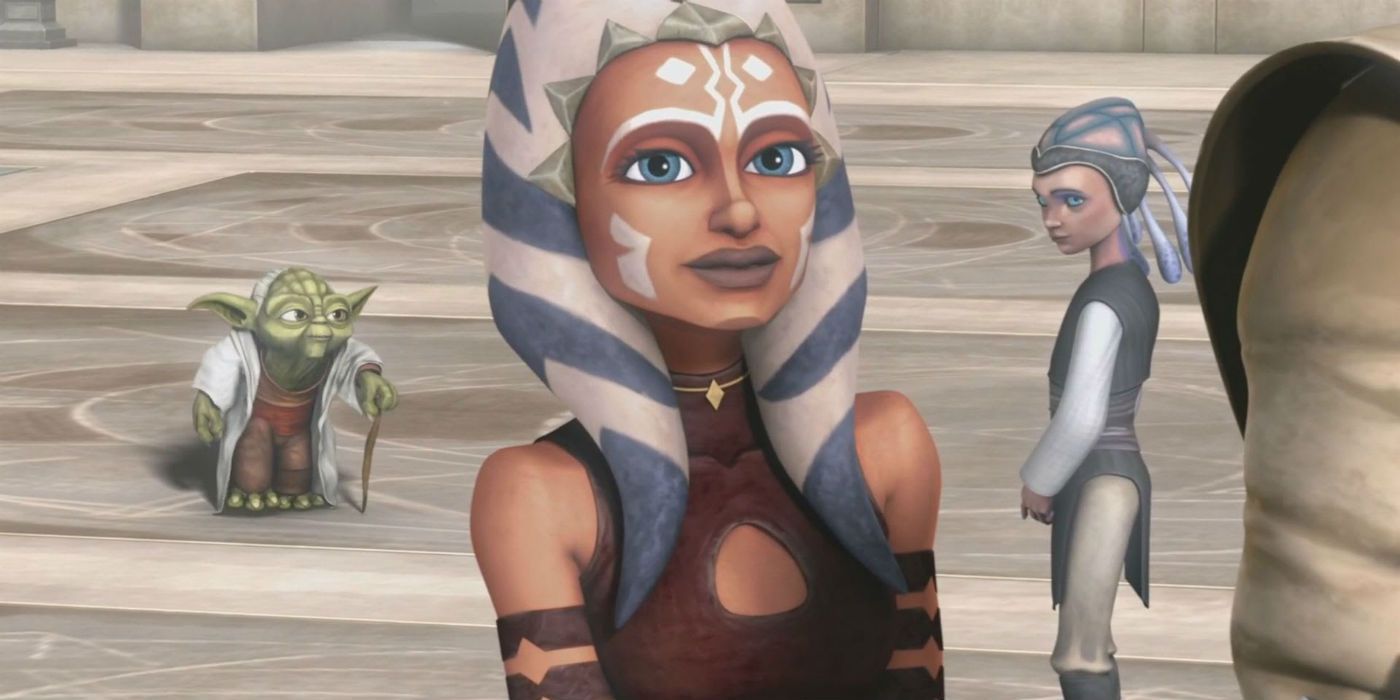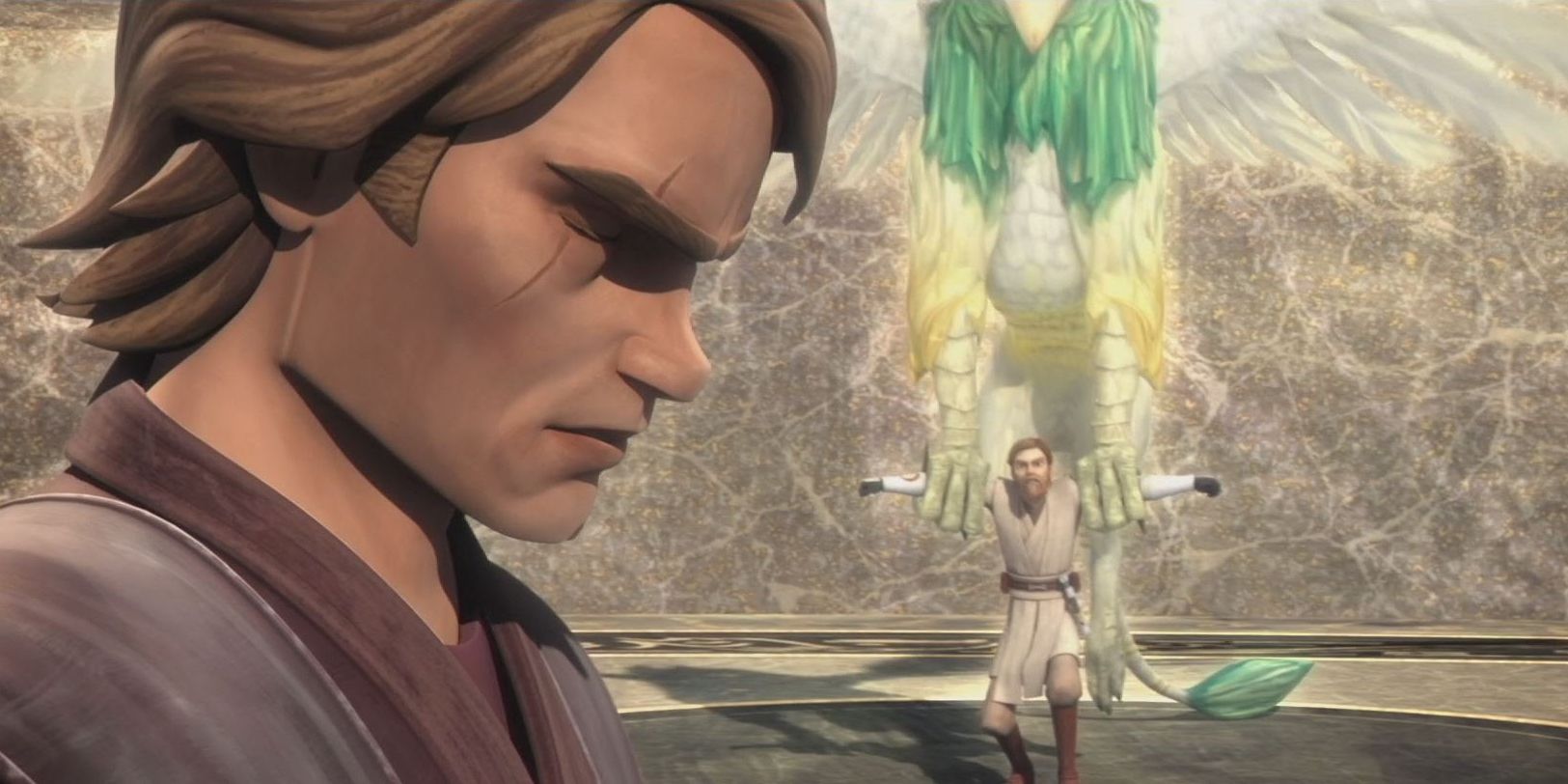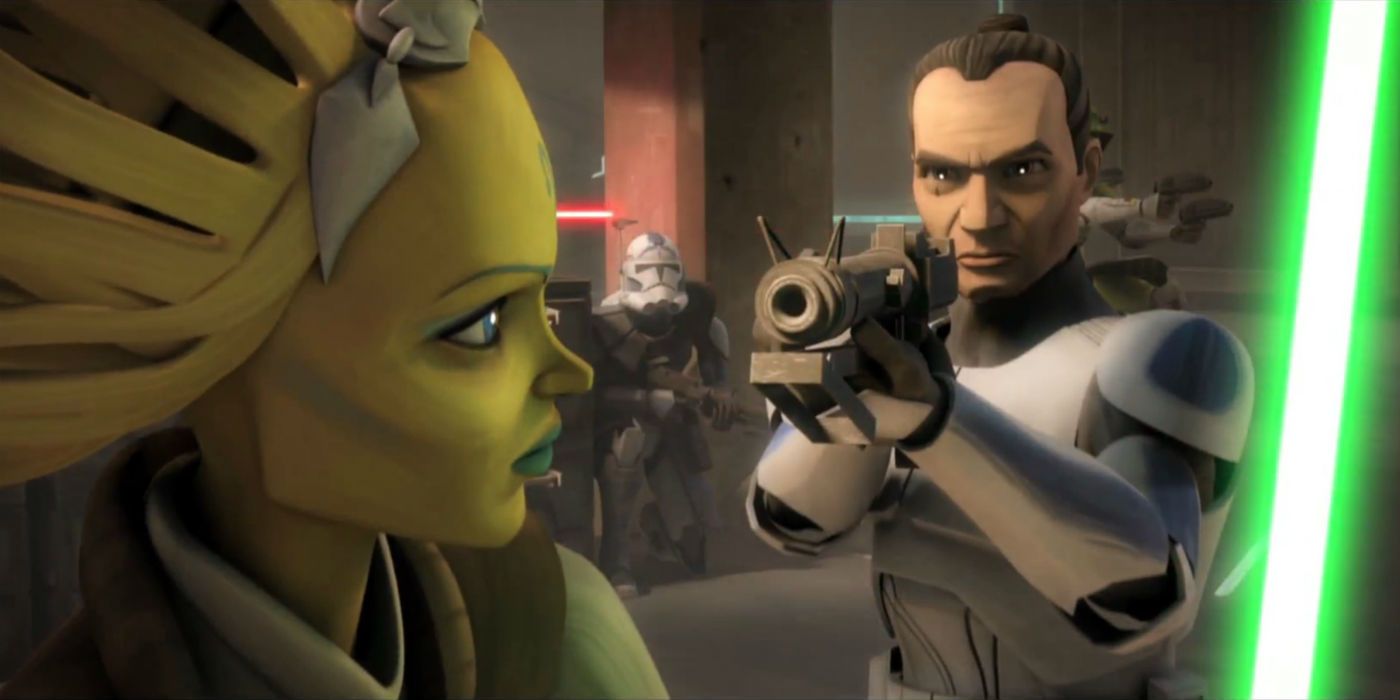Since the debut of "A New Hope" in 1978, "Star Wars" took the world by storm. Its rousing success eventually resulted in the "Clone Wars" television series. First premiering in 2008, the series focused on the time period between "Attack of the Clones" and "Revenge of the Sith" during the height of the Clone Wars, filling in major gaps of story left unexplained in the films.
RELATED: Star Wars "The Last Jedi" Footage Reveals Luke's Dialouge and More
"The Clone Wars" did more than fill in the gaps, though, as it built upon George Lucas' expansive galaxy. The series excelled, shining a brighter light on characters and events, better explaining them and adding context. In many ways, it often exceeded the film material it was based on en route to becoming a major part of "Star Wars" canon. CBR has decided to take a look at how "The Clone Wars" grew to such heights.
15 CARING ABOUT THE CLONES
Throughout the majority of "Star Wars" films in both the original and prequel trilogies, Clone troopers have been designated as little more than fodder, bred solely for the purpose of battle alongside the Jedi. There should never have been a reason to care about them. At least, until the Clone Wars did the impossible by taking viewers into the lives these troopers lead.
Through the Clone Wars, the troopers give themselves names, with Captain Rex and Fives being examples. They also had other unique features, like tattoos, to mark their own individuality. In "Clone Cadets," a glimpse of how they are trained on Kamino is shown, illustrating the amount of pressure they undergo before being sent to the front lines or risk being labeled a failure. The Jedi never treated them as expendable pawns, risking their own lives to save them, displaying a sense of camaraderie not shown in the films. Even the death of failed clone 99 was one of the more emotional moments of the series, showing that despite their identical faces, each of them has their own distinct personalities and have proven more than nameless people in trooper suits.
14 YOUNG BOBA FETT
As the "son" of notorious bounty hunter Jango Fett, Boba Fett was a character of the original trilogy who, in his Mandalorian-armored glory, met his demise much too soon at the hands of the mighty Sarlacc. The Clone Wars shows us that Boba's skill was manifested at quite an early age, no doubt thanks to this father's own.
A special, unaltered clone made specifically at Jango's request in exchange for becoming the Clone Template and providing his DNA for them, Boba makes clear that he is always the one in control. He nearly kills Windu with a strategically placed bomb and even leads a group of bounty hunters after his cover is blown. Even as a kid, his thirst for vengeance and his bad attitude never wane, as he is able to command adult bounty hunters and defeat them with ease in combat. Boba Fett is someone fans have been clamoring to see more of, with many hoping that his status as a premier Galactic Empire bounty hunter will be enough to warrant an anthology film in the foreseeable future.
13 LIMITED JAR-JAR
Easily the most hated aspect of the prequel trilogies, the long-loathed Jar Jar Binks had his screen time severely limited in "The Clone Wars." For the showrunners, this was a very smart move. The less Jar Jar, the better. The few times Jar Jar appeared was during diplomatic episodes alongside Padme Amidala, which often served as a brief break in the action of the never-ending war.
His most noteworthy feat was posing as Theed leader Lyonie in order to politically stave off an invasion of the city. Jar Jar was ultimately successful in this venture, and it was about the most anyone really needed to see him. "The Clone Wars" made sure that it focused predominantly on the war itself, and not the boring Senate details with some not-so-funny Jar Jar antics. It was recently revealed that he is actually still around and kicking. After the fall of the Galactic Empire, he is reduced to nothing more than a street performer in Theed on Naboo, unloved and scorned by many. A fitting ending for the most hated character in a galaxy, far, far away.
12 JEDI YOUNGLINGS
Despite all that have been shown about the Jedi's teachings, fans have never really gone in-depth with a youngling's progression towards becoming a full-fledged Jedi Knight. Fortunately, "The Clone Wars" touches on an important ceremony in every youngling's life: the crafting of their lightsaber.
In the episode "The Gathering," viewers witness the trip to Illum, where younglings must find their kyber crystals in a specially sealed cave. Not only do viewers catch sight of a Wookiee youngling (which is stated to be rare), but they also witness an important step in Jedi lore that had been in the dark for much too long. The subject of kyber crystals have only been recently touched upon in "Star Wars" canon, and their existence or purpose are never even mentioned until "Rogue One." While dealing with the obvious impulsive natures of the younglings, given their age, it was an enlightening process to see them construct and build their own lightsabers using the Force and their maturation process towards becoming Padawan.
11 JEDI RESENTMENT
In the prequel trilogy, the fall of the Jedi seemed so sudden and rushed without any kind of buildup or hint that the Order could just topple so easily. "The Clone Wars" better demonstrates that the resentment towards the Jedi, from those both outside of and within the Order, had long been building and only made it that much more unstable once The Great Jedi Purge took place.
It was clear that the Order originally served as independent peacekeepers within the galaxy and didn't serve as generals in any kind of army. But by fighting alongside them, many felt the Jedi turned their backs on their values and became mere puppets of the Republic. This was especially prevalent among those like Anakin Skywalker, who gradually became disillusioned with the direction the Order was going. "The Clone Wars" made the idea of swaying an indecisive Anakin that much easier to understand in ways that the prequel trilogies didn't, while also showing that the Order was not necessarily the most stable during the Clone Wars amidst their decreasing popularity in the public eye and from within its own ranks.
10 CAD BANE
If there's anything "The Clone Wars" made viewers realize, it's that Boba Fett isn't the only capable bounty hunter in the galaxy. Before he came into his own, there was Cad Bane, who became the top dog in the bounty hunting community once Jango Fett was killed at the hands of Mace Windu on Geonosis.
Skilled in fighting Jedi and other areas of combat, Bane was better known for his tactical ability, often being able to think several moves ahead and account for a wide array of scenarios. Even when things happen unexpectedly, he is able to adjust and think quickly on his feet. Because of this, he is able to pull off heists and missions that would be far above most average mercenaries. With a small group of bounty hunters, he was able to take a group of Senators hostage on Coruscant and later infiltrated and stole a Holocron from the Jedi Temple, a feat that is considered a suicide mission. Of course, such mastery of his craft comes with quite a high price tag, but for those who need to get things done in the shadows, look no further than Cad Bane.
9 FLICKER OF REBELLION
One of the most engaging parts of "The Clone Wars" was how it effectively connected the past, present and future of the "Star Wars" universe. In many ways, it shined where the prequel trilogy failed and was the product most people expected from them. One of these connections included the early stages of The Rebellion beginning to form, even before "Rebels" made its official debut.
The flicker of this rebellion came in the form of the conflict on the planet Onderon, in which Ahsoka, Anakin and Obi-Wan go to the Separatist-inhabited planet to train the rebels to fight to take back their homeworld. The arc displays the kind of struggle these rebels go through just to live each day. It emphasizes the casualties and consequences of war, as viewers see when Steela Gerrera died in the final battle to re-take Onderon. The story gave these nameless rebels a face while showing that war is kind to no one. Steela's brother, Saw Gerrera, is also introduced in this arc, which serves to provide him some early characterization, and how the results of this battle eventually led him down the path he took.
8 COUNT DOOKU
The prequel trilogy saw viewers introduced to Count Dooku, the Sith Lord serving under Lord Sidious prior to Darth Vader. Unfortunately, the films didn't do a fine job of portraying how cold and ruthless the former Jedi-turned-Sith could truly be, especially given the older age and physique of actor Christopher Lee. "The Clone Wars" took care of giving the fans a look at what made Dooku such an imposing threat.
Hailed as one of the greatest lightsaber wielders ever within the Jedi Order, Dooku was ruthless in combat, with few able to truly stand against him. His skill is such that he was able to hold off Ventress and her two Nightsisters, simultaneously managing to defeat all three of them without any assistance. He's also been the only Sith outside of Sidious to make consistent use of Force Lightning. He also trained Savage Opress as an apprentice, giving insight into the brutal mentality by which the Sith train their apprentices. As the face of the Separatist movement overseeing the droid army, he held great sway over a number of planets, demonstrating a calm demeanor that was rarely rattled. This is the Count Dooku fans needed to have.
7 HEIGHT OF JEDI ORDER
The Jedi are at the center of everything in "Star Wars." The films also did not and were not able to capture the height of the Jedi prior to The Great Jedi Purge. "The Clone Wars," however, built more on the lore of the Jedi Order and its other members during the war.
Seeing the various Jedi masters like Kit Fisto and Plo Koon get even a little more time in the spotlight outside of the main cast we're used to in Yoda and Obi-Wan Kenobi is a breath of fresh air and demonstrated the amount of skill the Order had within it. It also built upon the lore of the Jedi by revealing some of their long-held traditions and methods. From passing their teachings and various information through their holocrons to the construction process of their lightsabers, "The Clone Wars" displayed the large footprint and reputation the Jedi held over the galaxy. Such power demonstrated exactly why Emperor Palpatine was dead set on eliminating the Jedi and orchestrating the Clone Wars to discredit and weaken them since he could not simply eliminate them by force.
6 OBI-WAN IN HIS PRIME
One of the most featured Jedi Masters throughout the entire franchise, fans have seen padawan Kenobi in "Phantom Menace" and his subsequent ascendance to Jedi knight in "Attack of the Clones." Unfortunately, there was not enough of Obi-Wan in his prime as a Jedi Master in the film to gauge how powerful he truly was. Based on the skill he displays in "Clone Wars," there's no doubt that he was perhaps the most powerful on the council outside of Yoda and Windu.
Unlike the films, the series shows sides of Kenobi fans don't get to see. Whether its his skill in unarmed combat or his dual-wielding ability, he's shown himself worthy of his Master rank. Perhaps his most exciting moments came in his fights against Darth Maul and Savage Opress, who he fought simultaneously, even managing to take off one of the latter's arms in the process. "The Clone Wars" did more that show off Kenobi's combat skills. It also gave potential bits of information into his past, specifically when it came to Satine, the former Duchess of Mandalore. Despite its premature end, "The Clone Wars" only left fans wanting more from Kenobi.
5 RETURN OF DARTH MAUL
One of the things the prequel trilogy got right was the introduction of Darth Maul, a savage Sith apprentice who was tasked with assassinating Princess Padme Amadala. Following his defeat (and getting cut in half) at the hands of Obi-Wan, it was long thought he was gone... at least, until "The Clone Wars" decided to resurrect the now-former Sith.
Brought back from his primitive, vicious state from his brother Savage and Mother Talzin, Maul was driven on opposing both the Jedi and the Sith, becoming a major third party in the Clone Wars. His decision to ally with Deathwatch and become its leader played an integral part of Mandalore falling. His hatred towards Obi-Wan is especially powerful, keeping him alive for over a decade despite the loss of his legs and near-complete isolation. Bringing Maul back into the fold allowed for the franchise to fully deliver on his potential as more than a scowling face wielding a cool-looking lightsaber. Fans see a character that is cold, calculating and eager to establish himself as a dominant power once again.
4 AHSOKA TANO
"The Clone Wars" provided a much-needed boost in world-building for "Star Wars," and perhaps the best addition to the fold was the introduction of Ahsoka Tano, an apprentice assigned to Anakin Skywalker. Hailing from the planet of Shili, Ahsoka was a refreshing new character that provided a new layer for Anakin while quickly becoming a fan-favorite of the series.
Ahsoka was an extension of Anakin in many ways. She shared his strong sense of justice, idealism and was quite skilled as a Jedi for her age. By the same token, she also shared his lesser traits, like his fear of loss and impulsive nature, which at times could put herself and others in harm's way. Over the course of the series, she further matured into a strong, independent female protagonist, and her decision to ultimately leave the Order could be seen as a sign of her growth and independence. Ahsoka was a much-welcomed addition to the "Star Wars" canon, as she added an extra dimension of intrigue to Anakin's time as a Jedi while showing that there is more than one path to take. In a galaxy needing more diversity and strong female protagonists, Ahsoka stands at the top.
3 DARTH BANE
Sith lore was an aspect that was never as deeply dived into during the films, especially when it came to the Sith Lords and apprentices that preceded Palpatine. While he mentions his mentor Darth Plagieus to Anakin, a much more powerful figure was revealed to Yoda during his quest for immortality: Darth Bane.
Bane is a powerful figure within Sith lore, as it was he who conceived the Rule of Two, stating that only one Sith Lord and an Apprentice could be alive at any time, making the rule for the purpose of conserving the Sith from further destroying each other. His silhouette was revealed to Yoda in a vision during his immortality quest, trying to beckon him to the dark side. Of course, the wizened Jedi Master refused and didn't fall to its lure. This reveal was big in not only revealing what Bane looked like, but it officially made him canon. A major figure in the non-canonical "Legends" faction of "Star Wars" lore, Bane's status opens potential avenues for Sith anthology-type storylines later down the road and further adds to the expansive world building that the films have not matched.
2 LIKEABLE ANAKIN
The portrayal of Anakin Skywalker was among the biggest disappointments of the prequel, as he came off as whiny, entitled and shallow. In other words, he was not really what fans were looking from the man who would become Darth Vader. It took "The Clone Wars" for viewers to have an Anakin portrayal they could be happy with.
On one hand, viewers see a model Jedi skilled beyond his years with a strong sense of justice and charm. Viewers will also see a man caught between the Light and Dark Sides of the Force, still struggling with the loss of his mother and plagued by a stronger fear of loss and pent-up anger. The pressures and rules of being a Jedi made him a ripe target for Palpatine manipulation. Add in the departure of Ahsoka from the Order and it becomes clearer how Anakin's turn to the Dark Side was carefully weaved and orchestrated through the clone wars. The "Clone Wars" provided a much deeper and more complex look at the character that the films failed to deliver and makes his turn towards Darth Vader that much more impactful.
1 ORDER 66
The Great Jedi Purge was among the most cataclysmic events that led to the rise of the Galactic Empire. The way it happened, with clone troopers just turning on the Jedi and killing them, was left rather unexplained. Fortunately, "The Clone Wars" excels at filling in plot threads and much-needed explanations like this one.
The fact that Order 66 was almost unveiled by the Jedi was quite shocking, as a clone trooper named Tup inexplicably killed a Jedi Master when the built-in program was unintentionally activated. The program was later discovered by Fives, who found that it was built into the minds of every clone. Had he not been killed before getting the information out, the Jedi Purge wouldn't have commenced. Palpatine's cover could have been blown sooner. Such an explanation for how the clones could just turn on the Jedi without warning and how it was almost revealed is among the best aspects of "The Clone Wars" series. Despite being made to work and fight alongside the Jedi, the clones turned out to be their ultimate failure and downfall, making Order 66 that much more meaningful as it is carried out in full display in "Revenge of the Sith."
What were some things you liked about "The Clone Wars?" Let us know in the comments!

